Block planes reviewed
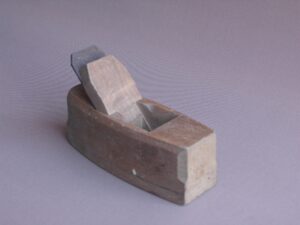
Which ones to buy
I’ve used Stanley block planes since I was 15 years old; 46 years. They work well for many aspects of work. Block planes are designed to reduce vibration by placing the bevel of the cutting iron uppermost instead of downwards as in the case of regular smoothing planes. This lower presentation angle give a direct cut negating the need for a cap or back iron and is more effective for cutting across or tangentially to the orientation of the grain. The compact size of block planes is usually around 160mm long and the body houses a 40mm wide cutting iron that is fully adjustable for depth of cut, cutter alignment and mouth aperture.
The Stanley and Record (Irwin) Models
The Stanley and Record Irwin range of block planes feature hardened and tempered chrome carbon alloy steel cutting irons, which take a keen cutting edge. Most block planes today feature fine grey iron cast soles that give good stability and wear resistance. Both Record and Stanley have made a wide range of block planes over the last century, but the most popular are the 9 1/2 and the 60 1/2. The Stanley 9 1/2 has a bedding angle to the iron of 21-degrees. The 60 1/2 on the other hand is the low-angle 12 1/2-degree model. Both models are useful, but I think it’s deceptive to present both as necessary planes.
Veritas Models
I have two block planes from Veritas that I like: Here they are side by side.
These are fully adjustable using the mechanics developed by Veritas in their larger bench planes. I like both planes and like their apron plane especially, because it’s simple and compact and the most common need for a block plane, and the reason they were often called an apron plane, is because we use them to ease the corners of our work.
These corners are usually in awkward places like the top edges of drawers, the inside corners of frames and recesses and so on. A bullnose plane will do the same and do it more efficiently in actual fact and this is the one that I reach for first for this task.
The adjustment of the newer, larger model is very nicely appointed with roped adjustment wheel and low-angle threading to the thread of the wheel that give such preciseness to adjusting the depth.
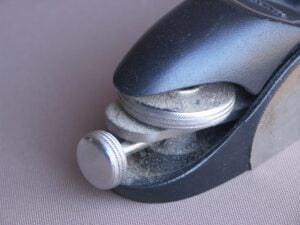
This plane will adjust by thousandths of an inch and the plane fits snugly into the palm of my hand. It has a heft to it that I like too.
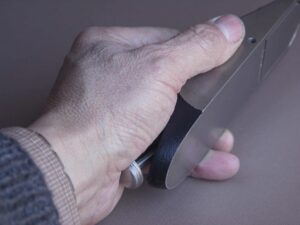
The other feature I like is the adjustable fore part that closes the throat opening for fine woodwork. I made two cabinets for the White House Permanent Collection in 2008 and this plane trimmed many of the veneers I used for the cross-banded frieze work around the doors.


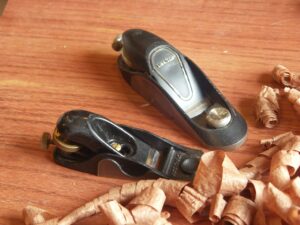
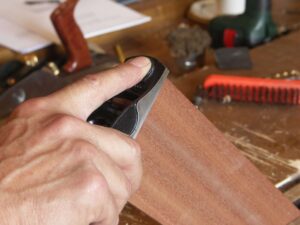

Hi Paul,
I use a Stanley #18 with the later design of the lever cap. It’s a joy to use and it locks tightly in place. Have you ever tried one of those?
Regards, Anders
Yes, I have. I don’t really use block planes too much but they are handy for different aspects of lighter work.
Very useful insight as always Mr Sellers. Il put one on my Christmas list thankyou for all your tips, this really is the most valuable tool I have in my woodworking world thanks
I’m a beginner woodworker and I have a no 5 faithfully and a old no 3 Stanley and I have tuned up both planes to be great planes, but I’m building my first tool chest and I’m squaring up my boards and I was wondering if it would be easier if I bought a low angle block plane for trimming the end grain because its hard to do with my bench planes. I am looking at the Veritas low angle block plane, what would you recomened me to do? Thank you so much for your videos and blog, you are the reason I started hand tool woodworking
Holly
I am not really an advocate of block planes because they are more a handy plane with very limited functional value. They are great for removing corners and such but generally are not a very good option for end grain use unless it is small and thin stock you are working on. You might consider their small bevel-up smoothing plane though. Thus does perform well on end grain.
Is the gist of this article that block planes:
1. Aren’t that useful/are of limited use/not essential.
2. If you do get one , it doesn’t really matter which model or make as they are all pretty much ok from the big manufacturers (Stanely,Irwin/Marples) & premium product manufacturers (Veritas)
3. You only need one, anyone, as they are all much the same.
How about Faithfull planes? Realistically, I can’t justify the price of new or used Stanley blocks planes. Would I be better off just using my bench plane and a sharp chisel (paring chisel perhaps) or knife? BTW I find my old 12″ wooden spokeshave (which has a low angle blade) versatile and useful for “trimming, easing, end-grain planing” but I don’t make fine furniture.
Very clear summary, Tone. Dead on. And I can live the remainder of my life not needing any type of block plane. I think that some people buy them because they look cute and useful.
I did buy a few used block planes at antique shows because they were “cute”. I don’t use them much on building furniture. However, I do find them very useful for carpentry type projects mainly involving trim, scribing face frames, etc…